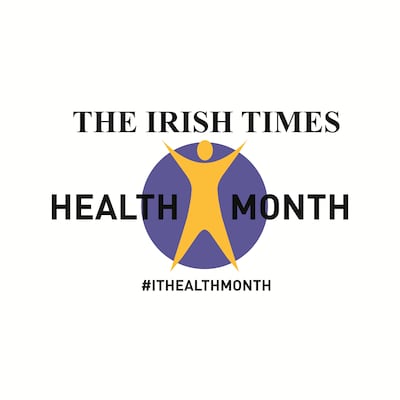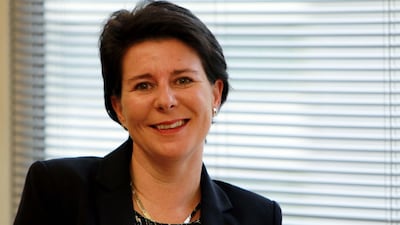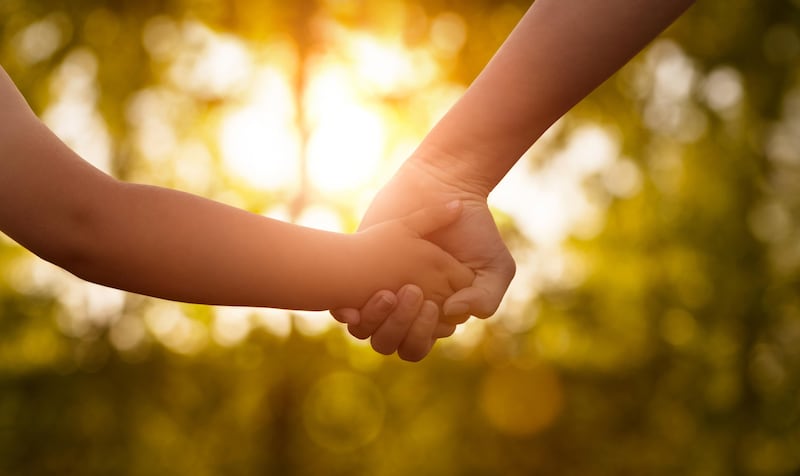
“The mothers did not have much choice,” the commission acknowledged, even if it declined to describe them as “forced adoptions”. Societal and religious pressures, along with lack of financial supports, made it very difficult for women during much of the 1922-1998 period under review, to see how raising a child out of wedlock would be possible never mind desirable.
The fallout from Ireland’s shameful treatment in the past of unmarried parents and their babies is a thread that still runs through the work of the Adoption Authority of Ireland, set up just 10 years ago. In its responsibility for regulating and monitoring all adoption activities, there is also a determination that we do not play any part in repeating history with some other country’s societal outcasts.
“It’s like opening up a wound - a wound that never went away,” says the authority’s chief executive, Patricia Carey, about the mother and baby homes report. She expects its publication to prompt more calls to the authority, where a significant part of their work is providing information, where they can, to adoptees and birth parents, as well as managing the National Adoption Contact Preference Register.
She notes the commission’s acknowledgment of the under-resourcing of the authority’s predecessor, the Adoption Board, which was founded after legalised adoption was introduced in 1952. Considering the high volume of adoptions at the time, being arranged through at least 20 societies, she asks how could the adoption board have overseen all the individual adoptions and the conduct of those agencies?

The establishment of the AAI on November 1st, 2010, under the Adoption Act 2010, which repealed all former relevant legislation, drew a line in the sand of Irish adoption. It coincided with Ireland, belatedly, ratifying the 1993 Hague Convention governing the protection of children in intercountry adoption.
Whether it involves children born here or abroad, "adoption is a service for children, it's not a service for people who wish to be parents", stresses Carey, in an interview with The Irish Times reflecting on the authority's first decade.
Legal limbo
In the absence of adoption information and tracing legislation, the AAI has been, and continues to be, in a “legal limbo” about what assistance it can give to adoptees, and indeed birth parents. But she welcomes as “sensible” the Government’s promise last week to “advance” legislation, centred on a person’s right to information about themselves and founded on GDPR principles.
Previous attempts to legislate for tracing got bogged down in the conflict between adoptees’ rights to know about their origin and the birth parents’ rights to privacy, with the most recent effort being a 2016 Bill that was shelved as unworkable at the end of 2019.
“We’re balancing rights all the time,” says Carey, who also suggests that it is a “little bit of a myth” that there are still a lot of birth mothers out there who don’t want their information shared. When people approach the authority for information or the release of birth certificates, staff always try to make contact with both parties.
Sometimes we hear back very clearly, no they don't want contact
“If you don’t hear back or can’t find the person, there is only so much you can do. And sometimes we hear back very clearly, no they don’t want contact. Or sometimes they are delighted ‘I have been waiting for this letter . . . ’.”
But, says Carey, it is made clear to adoptees that while they may have a right to information about themselves, “that is not equal to turning up at someone’s doorstep”.
At present, adoption records are held in various locations – with the AAI, Tusla or individual adoption agencies - but it is clear the AAI sees its future as a central archive, the need for which was highlighted in the mother and baby home report. The authority has worked with archive centres of excellence over the past four years, she says, “to train ourselves and to be competent and know exactly how to develop an archive”.
Saving documents
In 2019, the AAI took 10,000 records from Cúnamh, the oldest adoption society in Ireland. It has also worked with several that were closing down. “We were very determined that records would not be left in offices and health centres.” It still gets phone calls from private individuals who say they’re clearing out a relative’s house and have found documents the AAI might be interested in. These wouldn’t be individual records but correspondence from maybe a doctor visiting a mother and baby home, or from adoption agencies.
“We take everything – you just don’t know how valuable something could be. It could be a document that could make someone’s life very different if you had it on the file.”
Carey would like to see the National Adoption Contact Preference Register become an “active” register instead of its current “passive” operation. At present both an adoptee and a birth parent, or some other relative, have to sign up independently before a match can be made for contact.
You have to support both of those people from their position and sometimes through talking to them, they might change their position.
“We can’t go looking for the person associated with you,” she explains. “We have to see if the person associated with you is on the register, which means both of you opted for some form of contact or sharing information.”
Staff have to be “quite forensic” before confirming matches, particularly with common names. They examine what information has been given by each party in registering and will, if necessary, go looking for the adoption file.
When registering, people can indicate what level of contact they would like, be it just exchanging information or maybe letters, to being willing to meet in person. “Depending on what level of contact people are seeking, we would be talking to both parties because often you would have one willing to meet and one willing to share information. You have to support both of those people from their position and sometimes through talking to them, they might change their position.”
She believes people need support to prepare for reunifications and would be wary of people trying to trace through social media. Sometimes the authority is contacted by people very distressed that they have just been found by their birth mother or by an adopted child. “That is where it can go terribly wrong; sometimes they think we have given them information or helped them. That’s quite awkward because we can’t contact the other party and say I believe you have made contact with your birth mother...”
Now six years in the CEO role, Carey foresees challenges in the next decade and onwards around intercountry adopted children seeking information on their origins. “That has started to happen – mainly with children who were adopted from Russia and Romania. We are going to have to put some work in to develop safe systems for those young people to find information about their origins.”
You're going to match somebody with the most precious thing in the world, which is a child, so we have to be absolutely rigorous in our investigations and assessments and also for them
Having deplored the circumstances in which Irish babies were sent abroad during the 20th century, is there a danger we are going to see the flip side of that since becoming a “receiving” nation?
“I hope not,” Carey replies. “But I am sure there will be some stories and information that we won’t want to hear, pre-2010. Certainly, around the world, stories are starting to come out about practices.”
From January 1991 to October 2010, there were 4,282 intercountry adoptions from 33 countries approved by the then Adoption Board, according to AAI research. From November 2010 to September 2019, just 707 intercountry adoptions from 23 countries were registered here.
To those who argue that there are now too many obstacles between potential parents with a loving home to offer and children in dire need of such a family, Carey makes no apologies for the time-consuming rigour of the system. When people complain about the intrusiveness in their lives of the assessment process, it has to be realised, she says, that “you’re going to match somebody with the most precious thing in the world, which is a child, so we have to be absolutely rigorous in our investigations and assessments and also for them – that the assessment brings out their skills, so they will be adopting a child that they are equipped to parent.”

Much more preparation work is done now before people embark on assessment for a “licence” to adopt and many opt out at that initial stage, she says, realising it’s not for them. “You have to give them the stark reality of adopting a child who is a little bit older and may have additional needs – physical or intellectual. I think in the last few years, very few people say bluntly, ‘I want a family, where is the best place to go?’ More and more it’s people who are very thoughtful and also very conscious of the challenges that lie ahead.”
She also believes that with newer forms of assisted reproduction available, “people are choosing other paths to parenthood”. Those who do undergo assessment by Tusla staff and are declared suitable and eligible to adopt may face a long, and ultimately fruitless, wait to be matched with a child.
Before a declaration of suitability is issued by the AAI, applicants must have specified which country they want to adopt from – and it must be one that has also signed up to the Hague convention. There is only one agency here, Helping Hands, that is approved to mediate foreign adoptions and both it and the AAI provide information about countries' typical child profiles, waiting times etc, to help applicants decide which to opt for.
The once traditional form of adoption - where babies born here are adopted into a family unknown to them - accounts for only about four to 10 domestic cases a year now.
Of the 40 to 60 children a year now being adopted here from overseas, they are likely to come from Vietnam, Thailand, Philippines, Poland, the US or Haiti.
Carey says in her experience, it is better to have a small number of programmes, where you can actively work with those countries on developing them, “rather than trying to have 15-20 countries and not really know what’s going on”.
Adoption situations vary between countries. For example, she says, the programme with Haiti would only be encouraged for families that are quite robust, as it involves travelling to an unsettled country where the children are that bit younger but there are more complications such as longer waiting times. Then, say for couples where one partner is Polish, adopting from Poland is likely to be the preference.
Sometimes, after approved applicants’ declaration pack goes to a country, they can be matched with a child within a month, or it may take 18 months or more. “The sending country is looking at the profile of the children and the profile of the applicants and we have to totally respect their wishes in terms of the matching.”

The licence to adopt lasts three years and while it can be extended once for 12 months, another renewal involves reassessment of the applicants. In 2019, the AAI issued 48 declarations of suitability for intercountry adoption and extended another 27 existing ones by 12 months.
The once traditional form of adoption - where babies born here are adopted into a family unknown to them - accounts for only about four to 10 domestic cases a year now. The rest of the fewer than 100 domestic adoption orders granted annually in recent years would involve older children in long-term foster care, or step-children, being adopted by parents they are already living with.
Irish citizens living abroad
While new entries in the Register of Intercountry Adoptions have numbered between 300 and 400 annually after 2016, the majority of these would have been children being adopted by Irish citizens living abroad. For instance, in 2019 there were 386 entries made in the register, of which just 33 were babies being adopted from abroad by people habitually resident in Ireland, according to the AAI’s latest annual report.
Carey thinks there will always be some level of intercountry adoption and there is still huge interest worldwide from people wanting to adopt children. While social and economic inequalities have led to questionable practices in adoption circles in the past, Casey believes all countries that have signed up to the Hague have central adoption authorities that are rigorous in their work.
“We share information as well. Maybe 20 years ago a practice could develop; now, if something happens in a country everyone will very quickly get to hear about it in a matter of days, because of technology. That is like a warning light and we can do something about it. Whereas 20 or 30 years ago, you wouldn’t hear about it for a year or two or more.”
It’s very positive, she stresses. that in a lot of Asian countries, domestic adoption is developing and growing but “unfortunately there will always be children in countries that are not adopted. Nobody wants to visit a country where you see children in childcare settings and they are four, five, six and there are sibling groups, that is not positive for those children.
“If there are families that are equipped to parent those children, that is a good thing,” she adds. “But it is only after the domestic adoption system has been exhausted for those children.”
[ Adoption Authority of Ireland’sOpens in new window ]
ADOPTION AUTHORITY OF IRELAND in NUMBERS
– 10 years in existence
– 728 domestic adoption orders granted*
– 2,232 entries made in the register of intercountry adoptions*
– 815 matches created through the National Adoption Contact Preference Register*
– 30 staff
– 5 million-plus euro annual budget
– 1 chairman, Dr Geoffrey Shannon, until his second term ended and Orlaith Traynor took over in November 2020.
*From November 2010 to December 2019.
Source: Celebrating Ten Years of the Adoption Authority of Ireland 2010-2020



















